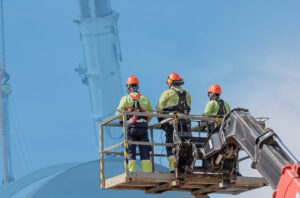The Coronavirus (COVID-19) pandemic has introduced many new concepts and terminology to the language. One of these is “long COVID” also known as “post-COVID-19 syndrome”.
Most people who contract COVID-19 will feel better in a few days or weeks and most will make a full recovery within 12 weeks, however symptoms can last longer for some people and this is what is known as long COVID.
Lots of symptoms have been associated with long COVID, amongst others the NHS website lists extreme tiredness, chest pain or tightness, problems with memory and concentration, dizziness, earaches, changes to the sense of smell or taste. More information can be found on the NHS website at: https://www.nhs.uk/conditions/coronavirus-covid-19/long-term-effects-of-coronavirus-long-covid/
For an individual it is generally considered that being in employment can have a positive effect on mental and physical health and well being. For employers the benefits of retaining an experienced employee are usually greater than recruiting and training new staff. However persistent symptoms along with anxiety can make a return to work difficult for someone with long COVID and the longer an individual is off work the harder it can be to make a return.
During 2021 the HSE carried out a review of the scientific evidence currently available concerning returning to work after long COVID. While the review found there was currently a lack of relevant published research specifically looking at return to work from long COVID there were similarities with other conditions such as Myalgic Encephalomyelitis/Chronic Fatigue Syndrome (ME/CFS) and the HSE were able to recommend some guidelines for managing a return to work in line with the existing guidance published by the Faculty of Occupational Medicine.
Any return to work will need to be tailored to the individual but as a general guide a phased return to work with flexible work arrangements and strategies to manage fatigue (e.g. regular rest breaks) is likely to help and this can be adapted as time goes on.
In summary:
- Health professionals should be involved with return to work advice and reintegrating the returning worker as soon as possible.
- The employer and the absent employee should make early contact, within the first two weeks from the onset of the absence is recommended as a good practice.
- A progressive, adaptive, and appropriate return to work is the primary goal since an individual does not need to be 100% fit to return to work.
- The occupational health professional, where available, should develop a close and trustful relationship with all stakeholders to initiate a return to work. The worker with long COVID should be allowed to be actively involved in (re)designing his/her work.
- The work of the individual with long COVID should be adequately and appropriately adapted where possible.
- A return to work plan for individuals with long COVID could include: a phased return, flexible work, time off for rehabilitation and medical appointments, fatigue management strategies, adapting work tasks, etc
This evidence review can be downloaded from the HSE’s website at:
https://www.hse.gov.uk/coronavirus/science-research.htm
Further advice on returning to work with long COVID can also be found on the NHS website at: https://www.yourcovidrecovery.nhs.uk/your-road-to-recovery/returning-to-work/ along with more general advice for those with long COVID symptoms at https://www.yourcovidrecovery.nhs.uk/
Please speak to your normal PIB Risk Management contact or get in touch using [email protected] if you have any questions or would like assistance with managing a return to work from either a health and safety or HR point of view.

New rules for providers of social housing in England

Small but mighty – working safely with nanomaterials

Do you have a MEWP rescue plan?

Changing the asbestos control regime

HSE Launch Motor Vehicle Paint Spraying Campaign
